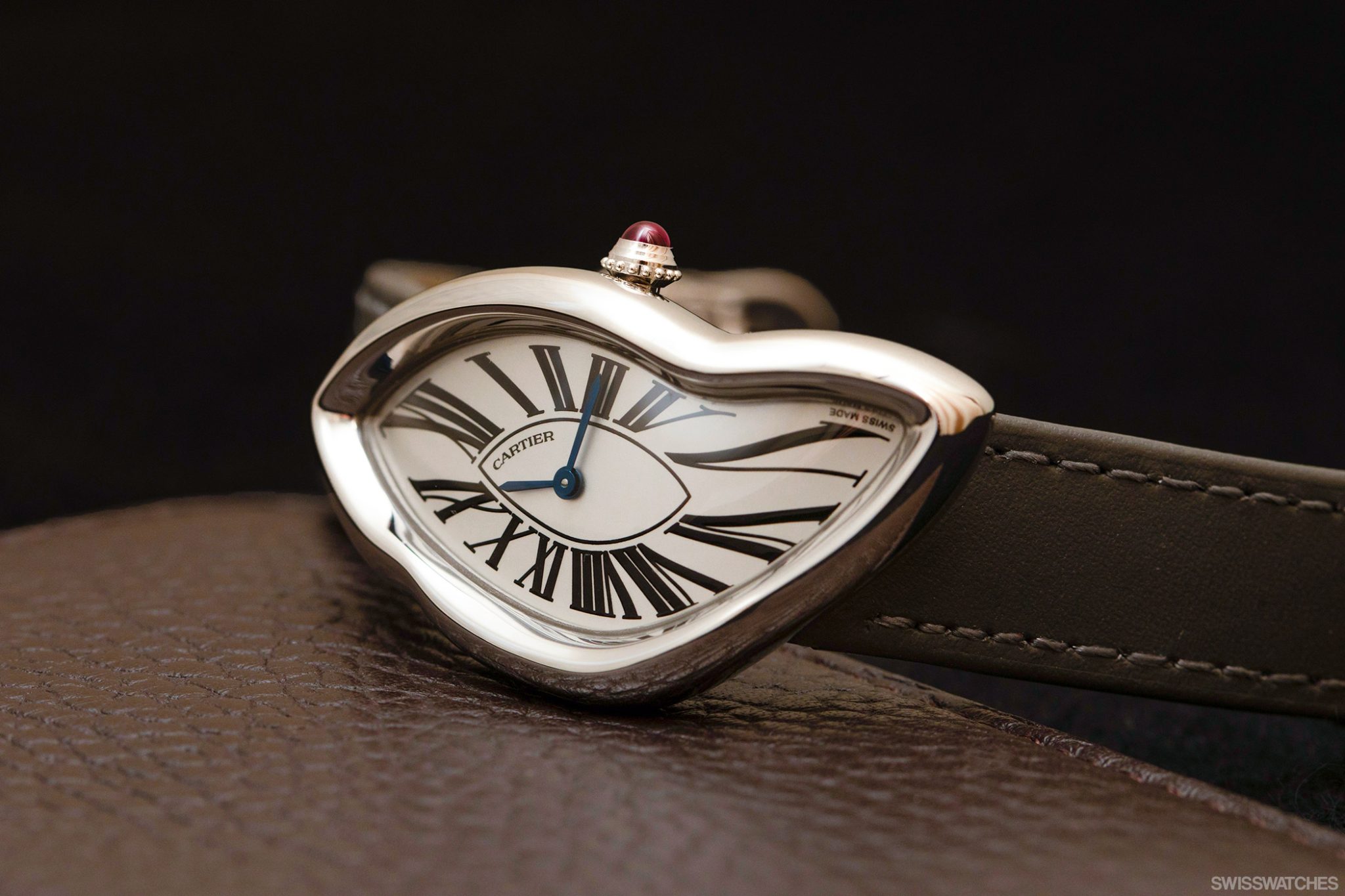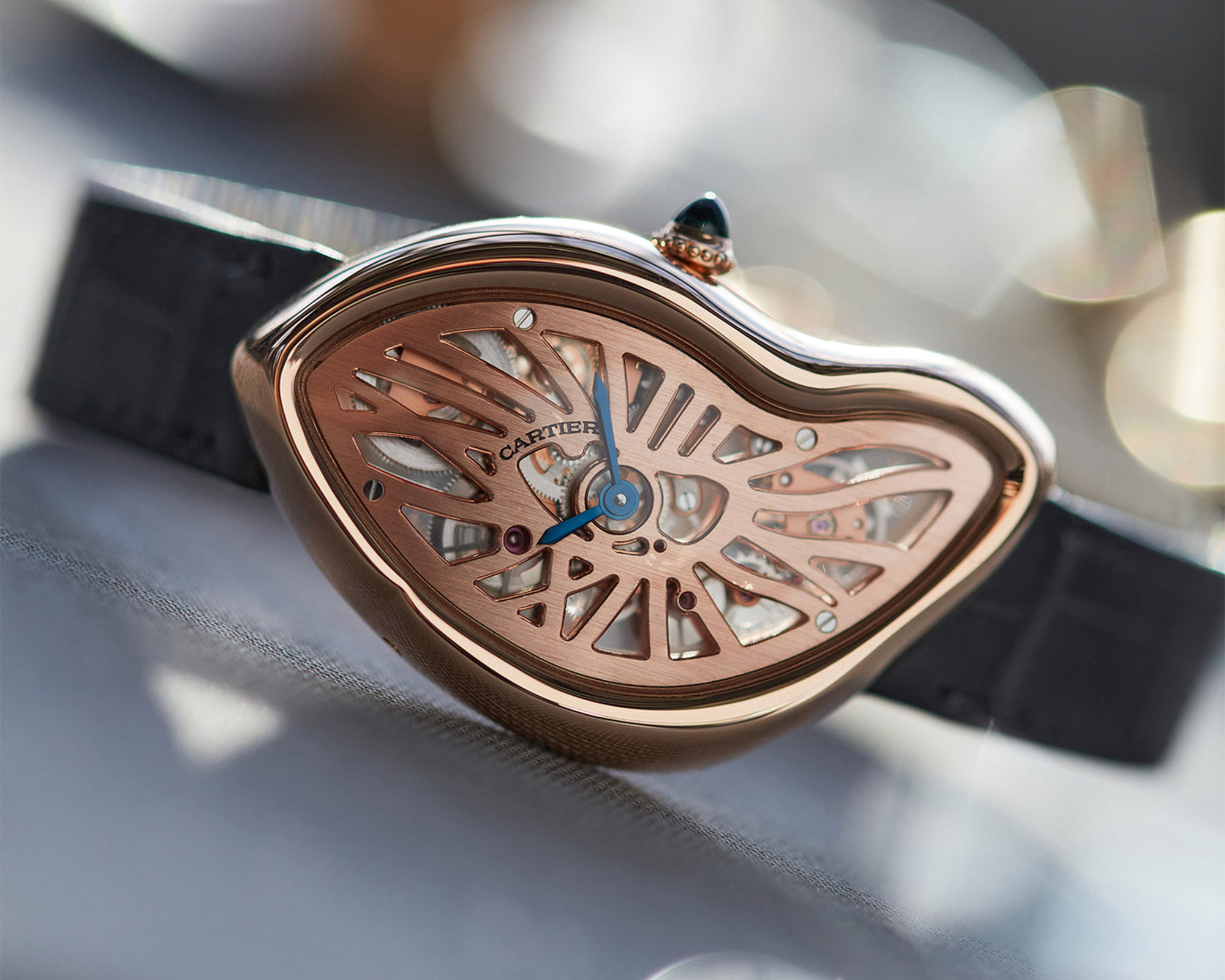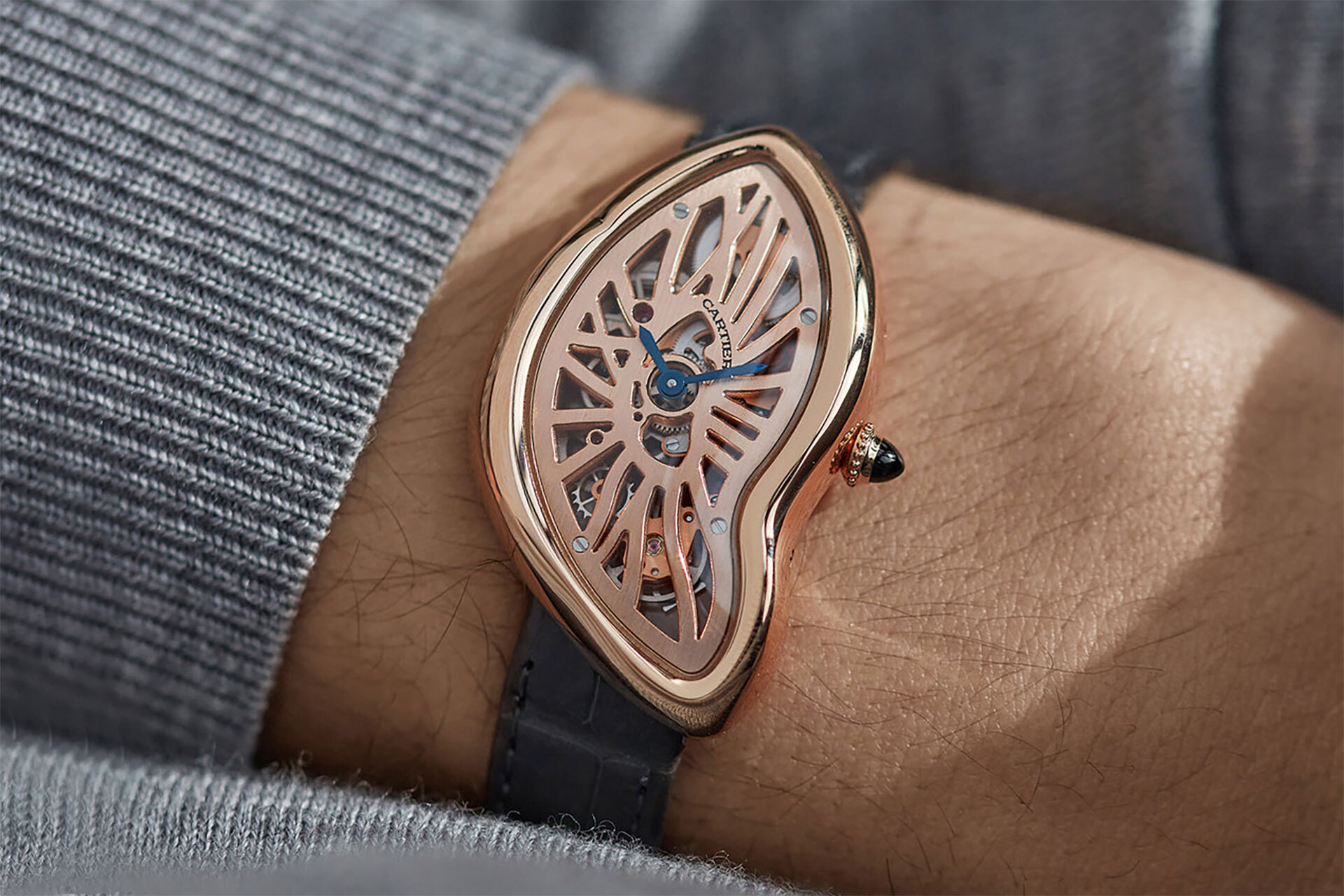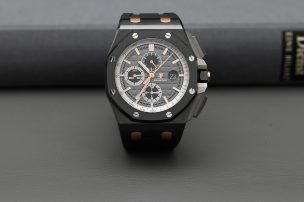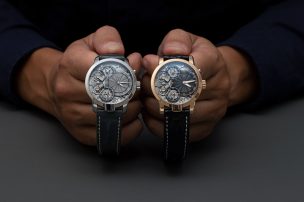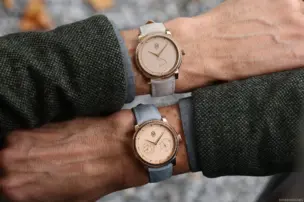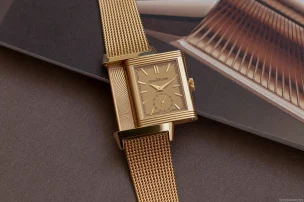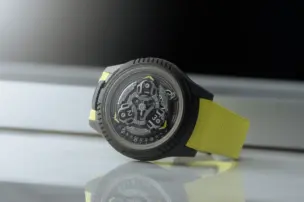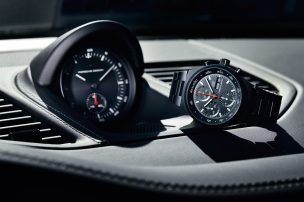
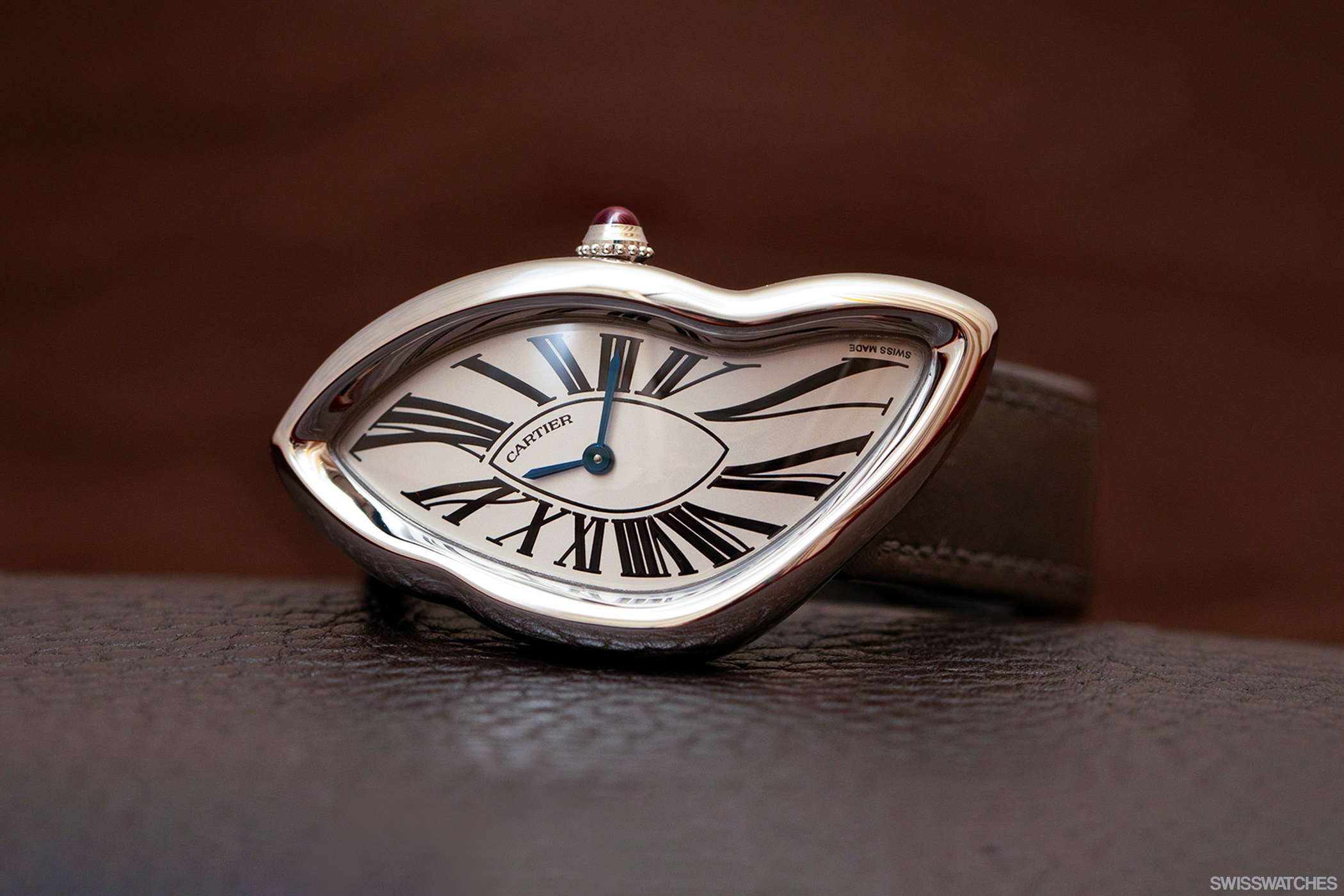
The Rise of The Cartier Crash
Collecting is certainly more of a journey than a destination as tastes, among other things, change over time. One thing which changes significantly, yet is scarcely talked about, is the underlying motive for making a purchase. At the beginning, starting out with little knowledge, you tend to make a purchase based on one sole factor: how a watch looks. Yet as time goes on, and your internal horological encyclopedia grows, you can find hundreds of different reasons for making a purchase. One such reason, for collectors very far down the rabbit hole indeed, is quirkiness. When it comes to quirky watches, one need not look much further than Cartier, and more specifically, than the Cartier Crash.
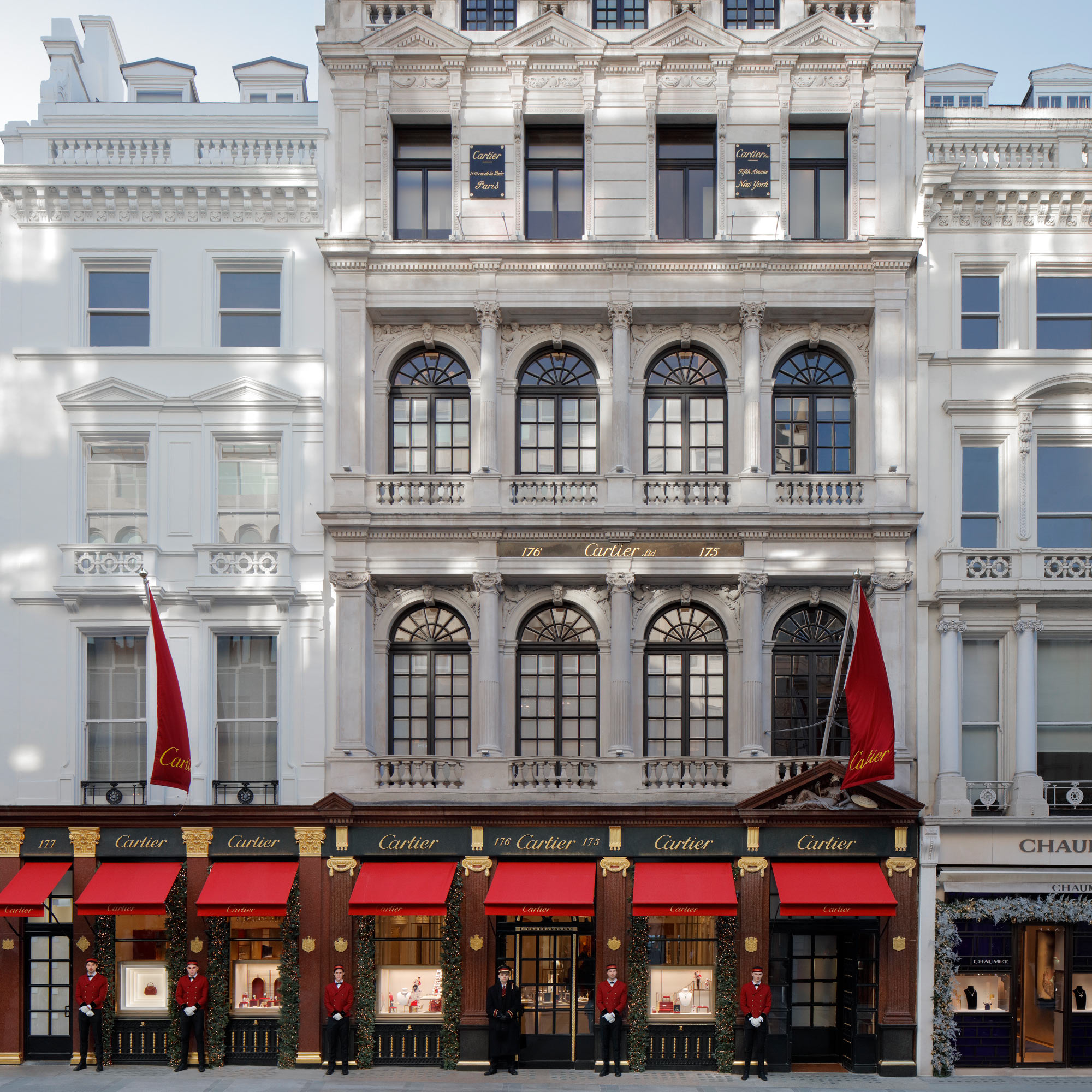
Created by Cartier London in 1967 and emerging from a plethora of rather dubious stories, the Crash has since been a hallmark piece for the French brand. The inspiration allegedly came from a client who had been involved in a traffic accident, when his Oval Maxi or Baignoire melted under the heat, consequently producing a somewhat disfigured yet recognisable watch. While this story remains merely a tale for now, it does have some merit considering the shape of the Oval Maxi (left) or Baignoire compared to the Crash (right).
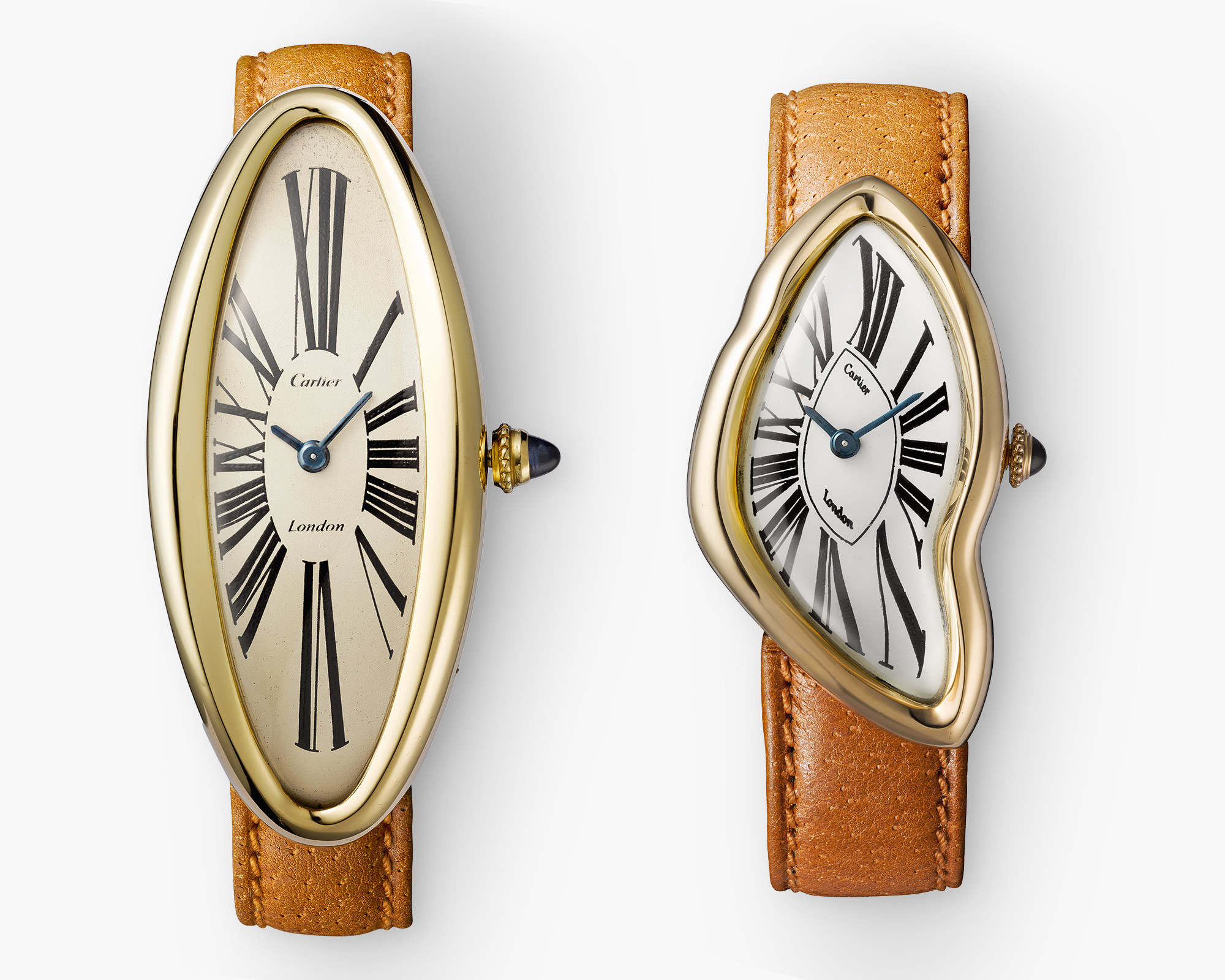
Cartier Baignoire (left) and Cartier Crash (right)
As nice as it may have been for this story to be the case, it is rather unlikely indeed that this had any effect on the creation of the Crash. Rather, it was a product of the great Jean-Jacques Cartier, and his contribution to the flamboyant fashion era of the swinging sixties, which, after all, did revolve predominantly around London. Jean-Jacques Cartier was the son of Jacques Cartier, one of the three original brothers that built the foundation for the Cartier empire. He was left in charge of the London branch in 1945, aged just 26, which was quite the responsibility considering his clients included the British royal family. During this period, the fashion was loud and adventurous to say the least, and people tried to leave their mark. This was a perfect foundation for Jean-Jacques Cartier to create what now seems an even more rogue and confident design for a wristwatch.
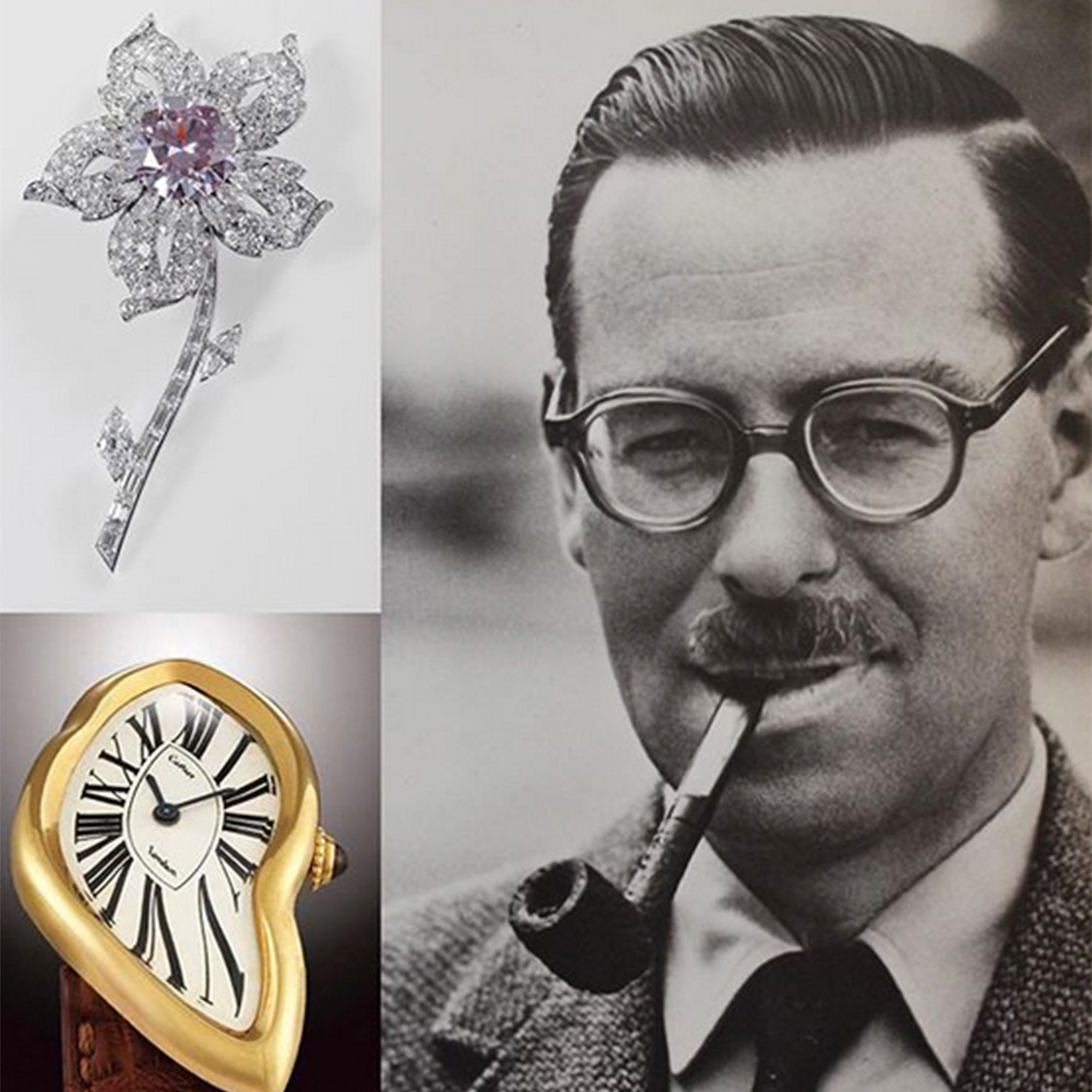
Cartier London began producing the first run of the Crash at the end of the 1960s, but very few units of the original London first run were produced. Cartier has given us no figure, but only a handful have resurfaced after all these years, and according to Revolution Watch Magazine, only three of these first-edition London models were known to appear in white gold.
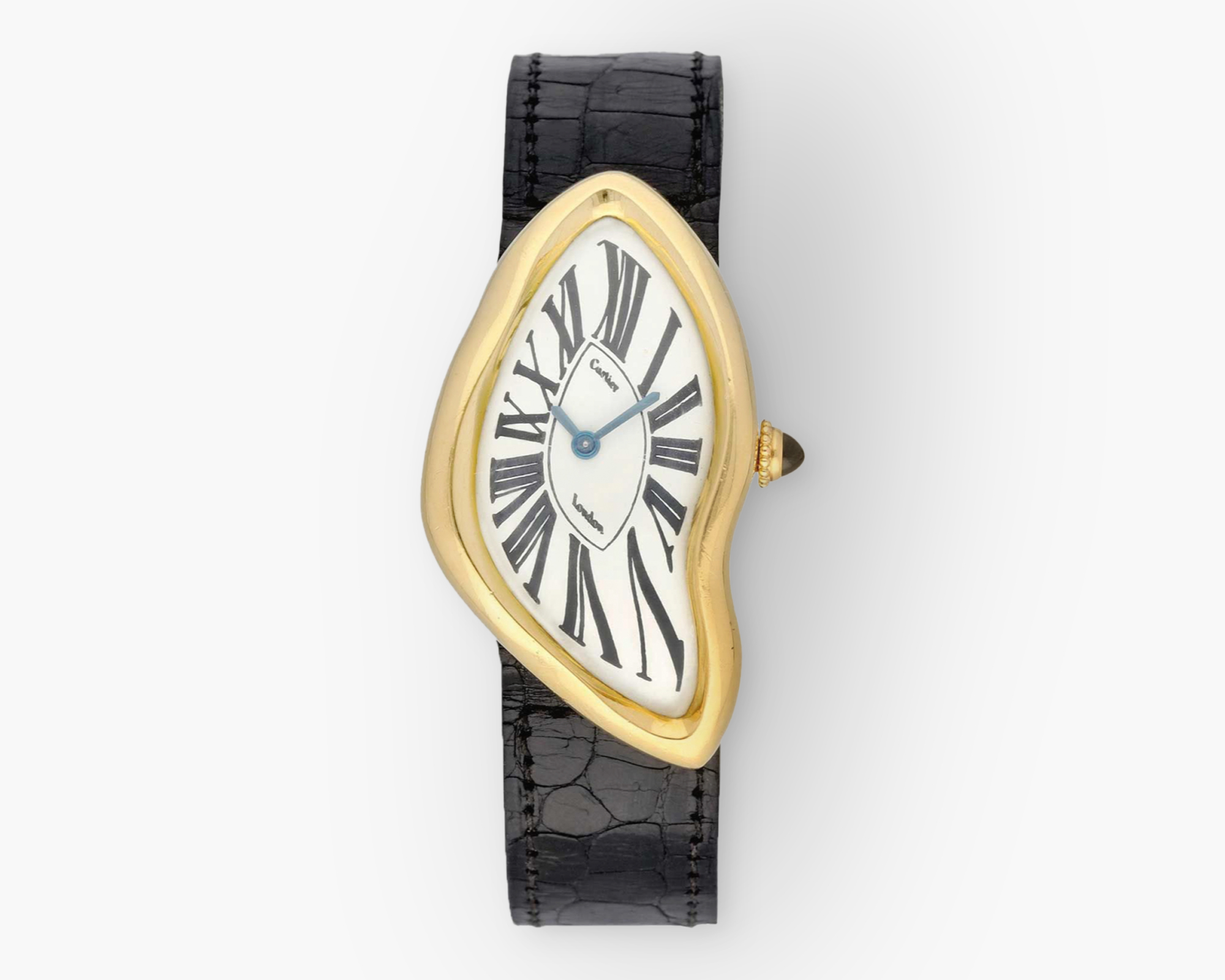
One of the first Cartier Crash London from ca. 1967
Credit © Sothebys
Paris Crash and Centralisation
In 1991, Cartier Paris created its very own version of the Crash, after presumably deeming the London design worthy of its full attention. And yes, you guessed it, the dials were indeed produced with ‘Paris’ on them instead. This was initially a limited run of 400 (numbered) pieces in 18-carat yellow gold. For a brief period of three years, the London and Paris Crash were produced alongside each other, until, in 1994, the London Crash was retired and production became centralised by the maison.
Since then, a number of editions have been released by Cartier, but all of them in very low numbers to respect the exclusivity of the original London Crash. In fact, the Paris version released in 1991 and limited to 400 pieces is still the highest number of pieces for any Crash edition by Cartier. More recent editions often have ‘Swiss made’ on the dial instead.
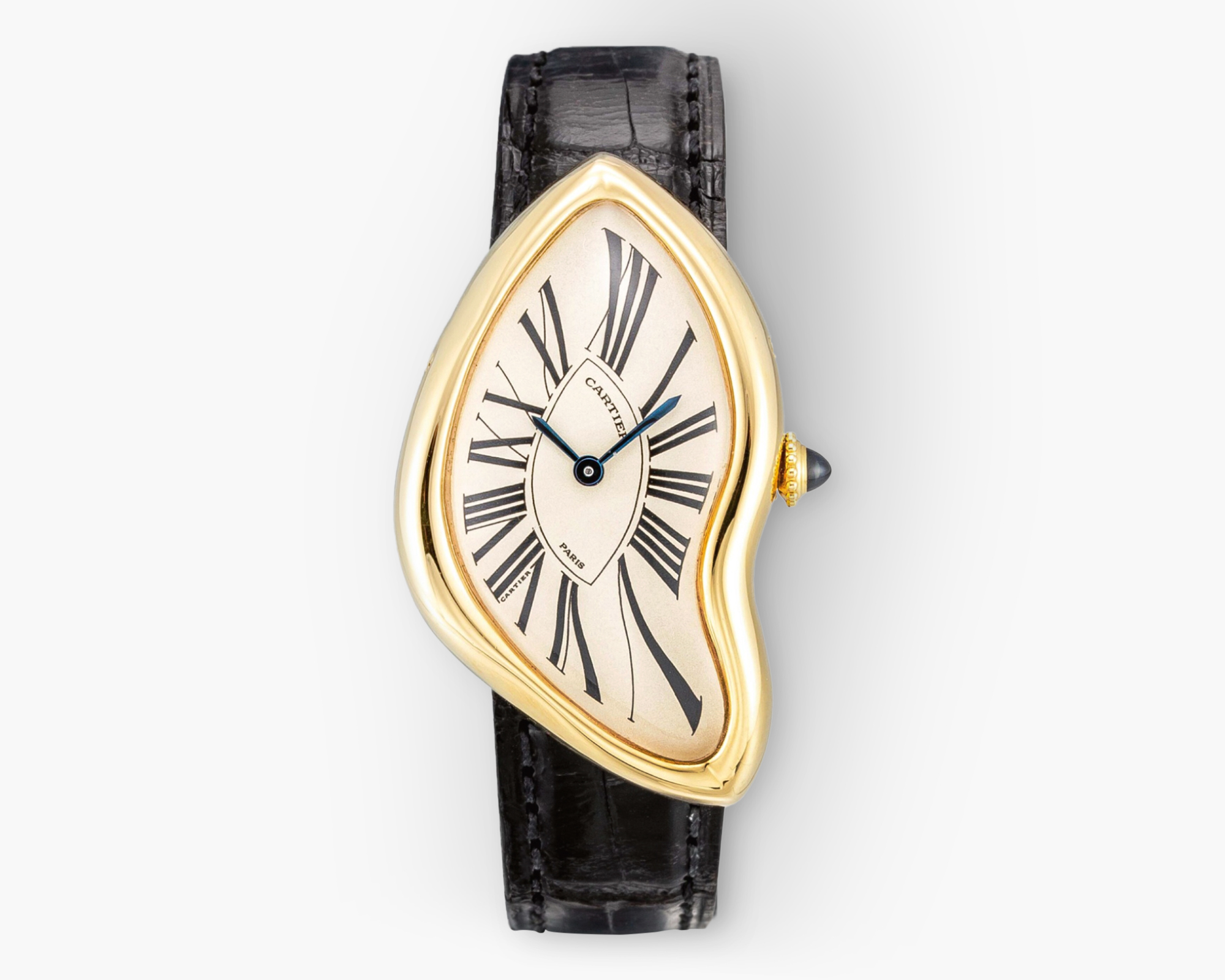
One of the first Cartier Crash Paris from ca. 1991
Credit © Sothebys
Crash highlights
Amongst the various iterations of the Crash produced since 1967, there are a few special and interesting ones which stand out in particular. In 2014, Cartier presented two versions of a new skeletonised Crash in a 28mm x 45mm case. ‘Available’ in either polished rose gold or polished platinum, only 67 pieces of each were produced, in a nod to the year of its creation – 1967. It’s worth noting that I say the word ‘available’ in inverted commas, because Crash models are usually far from available unless you happen to be a top client.
Credit © A Collected Man
Last year, the maison unveiled perhaps the most impressive Crash of all. One which entailed two of Cartier’s most important characteristics as a brand: wristwatch design and gemstone setting. The Crash Tigrée was certainly something to behold; a striking facade consisting of 1.64 carats of diamonds set in yellow gold inbetween opulent green and blue enamel in the striped fashion of a tiger.
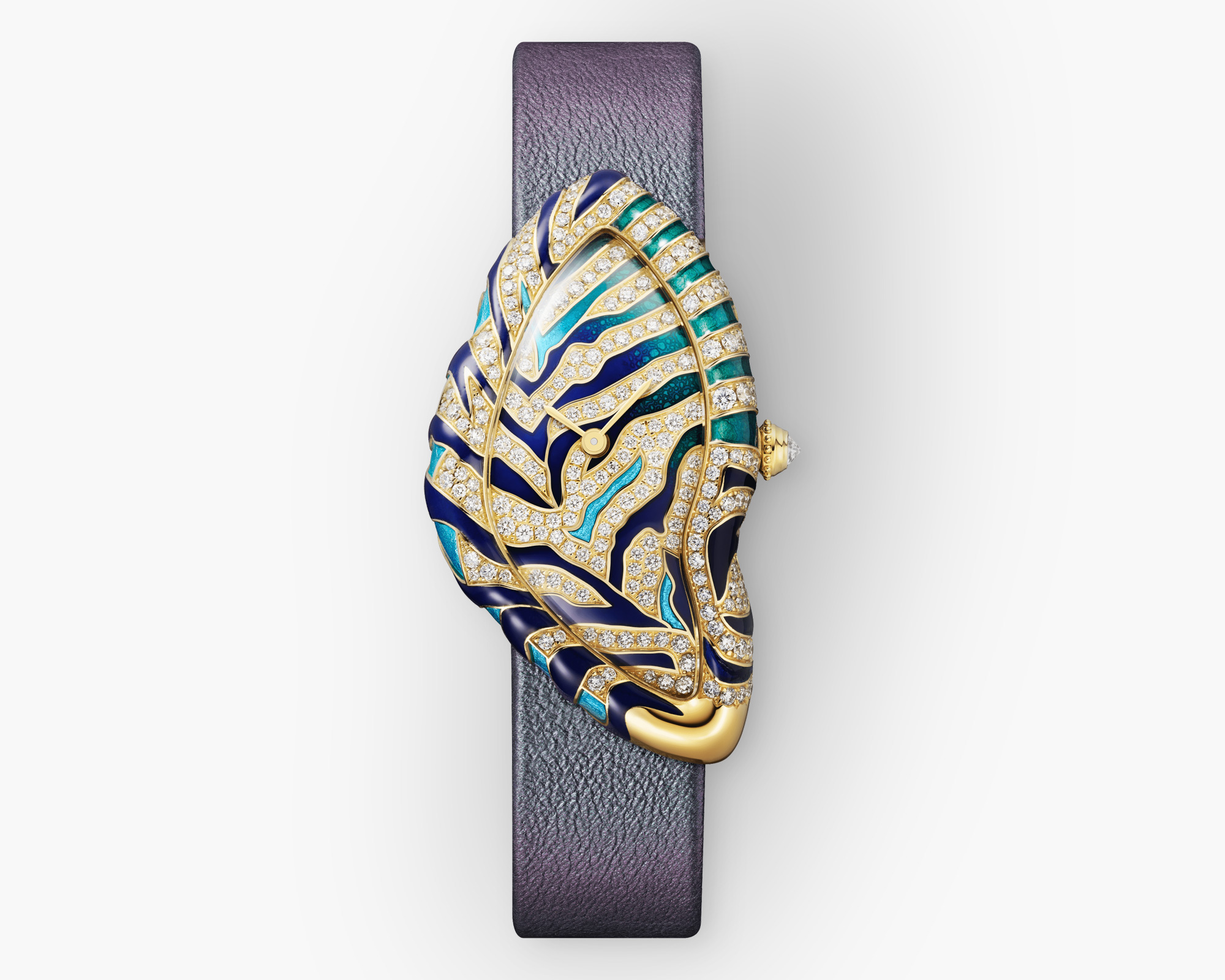
Cartier Crash Tigrée
The enamel was set using the champlevé technique, in which ground enamel powder is heated up to a temperature of around 750°C in order to melt it. The process requires firing and adding powder to the kiln multiple times to achieve the correct hue, before it is poured into the grooves and set. Only 50 of these masterpieces exist, with @thewatchrookie (via Instagram) being one of the first to share his online in a post.
NSO Programme
For some high-end clients, Cartier also has a ‘New Special Order’ programme in which they can design a unique piece based on existing Cartier designs, such as the Crash. It is worth noting that the Crash is probably the hardest Special Order watch to secure, for obvious reasons. Whilst in theory the choice of colours and materials for a special order is endless, there are of course certain boundaries in which Cartier will deem a design to be appropriate. Anything that ventures beyond those boundaries will be politely declined in order to protect the legacy and image of Cartier and in this instance, the Crash.
There are many great examples for New Special Order Crash models, however one particularly nice one belongs to Alvin Chong, Singapore based Cartier collector and enthusiast. A pink gold case, eggshell-ivory dial with burgundy numerals, blue-fired sword hands and what appears to be a sapphire cabochon crown.
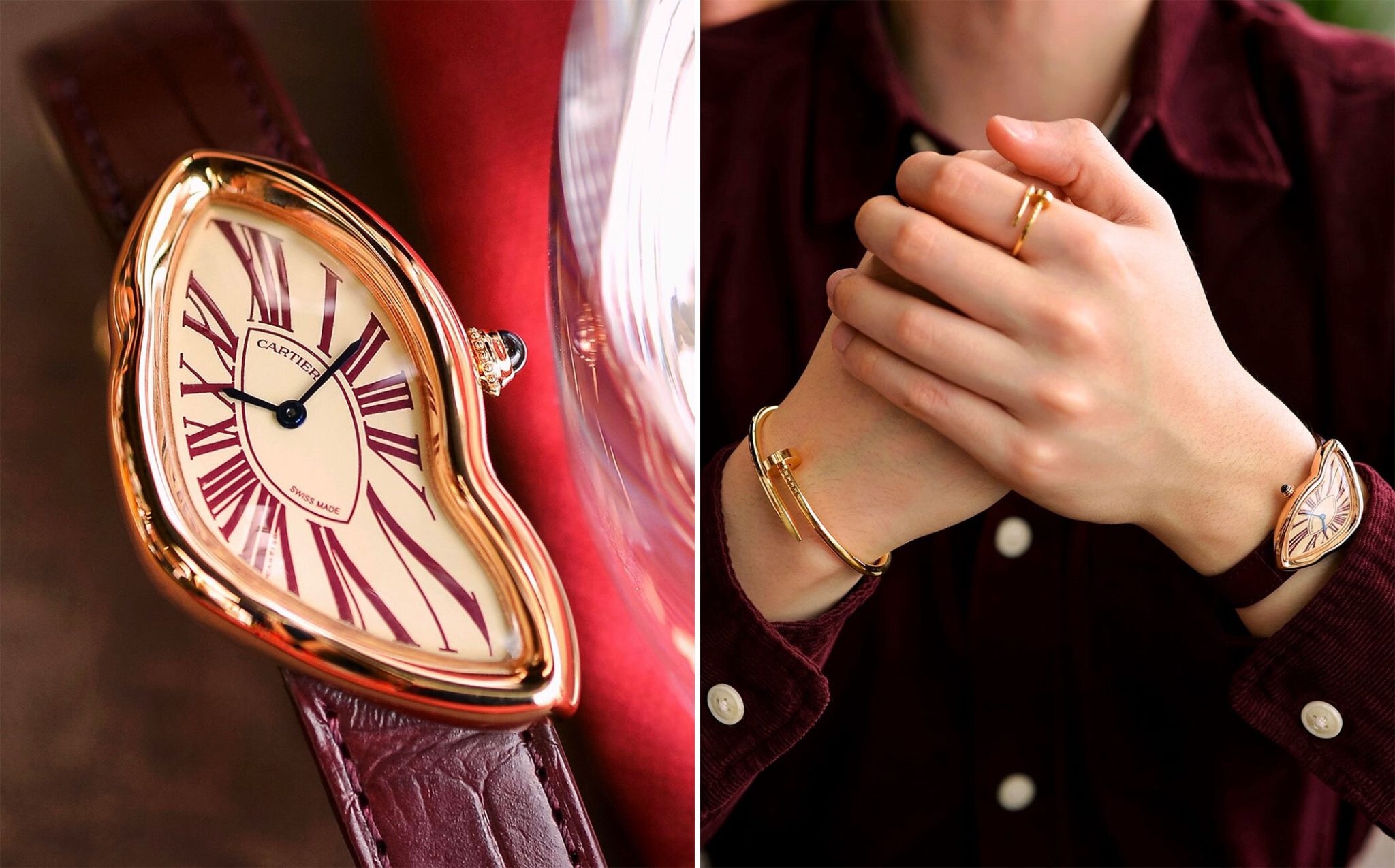
Credit © Watchrology
Auction prices creeping up
So, the Crash is rare and desirable – but how much has it caught on? Over the last decade or so, the popularity of the asymmetrical design from Cartier has increased dramatically, and not just due to Tyler the Creator and Kanye West. The watches have gained attention from collectors who seek the rarest of pieces. Examples of early Paris Crash models from 1991 were selling under the hammer for around 30,000 dollars back in 2010. Now, you’re looking at around a quarter of a million dollars. And that’s for a later Crash model, produced 400 times. London is a whole different ball game.
A London Crash was auctioned last year through the online auction platform Loupe This. It was an original London edition from the birth year 1967, and in very good condition. Price? Well, let’s just say you could buy a nice house or two for 1,654,277 dollars.
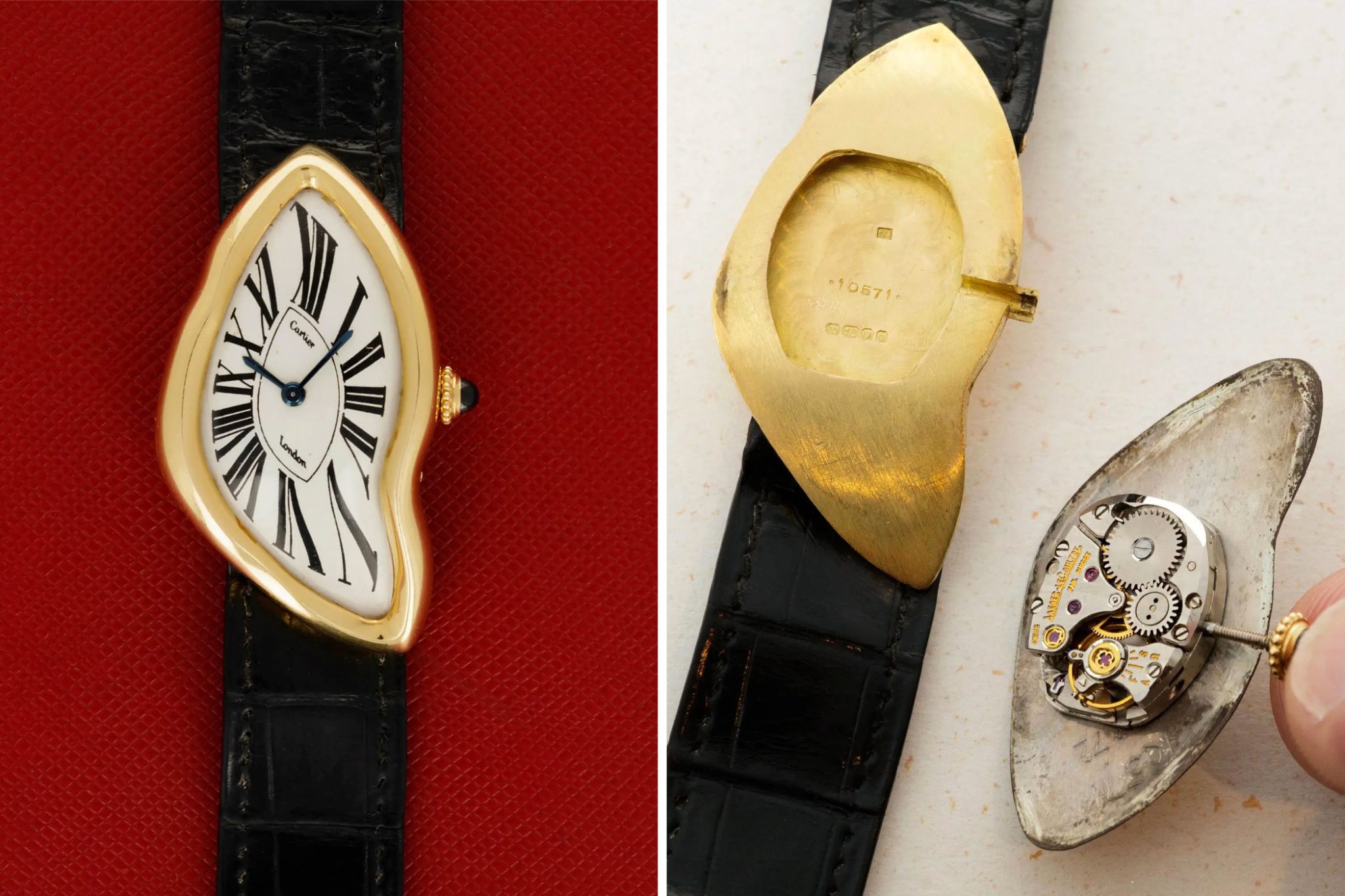
Credit © Loupe This
However, as we all know, the world of watches isn’t so simple. If the value can fluctuate so much just depending on the name of the city that is painted on the dial, then what is stopping people from trying to replicate the rarer versions? Well, not a lot, apparently. There was plenty of controversy about a Crash auctioned last May at Phillips in New York. It supposedly had an all-original London dial and was from 1970, but online myth buster Perezcope brought to light the fact that it was, in fact, not an original London Crash at all. Inconsistencies in features such as the precision and alignment of the text and the crown gave away that this model could not have been from 1970. Despite the watch world becoming aware of this before the actual auction, the model still realised a price of $453,600. Lower than what a 1970 London Crash would be capable of achieving, yet still higher than an all-original Paris Crash from 1991, for example.
Iconic forever
So whats next for the Cartier Crash? where does the future of this iconic 60’s design lie? Well, Cartier for sure haven’t finished creating new versions of the Crash, in fact just last year Cartier announced a new addition to continue the Crash story.
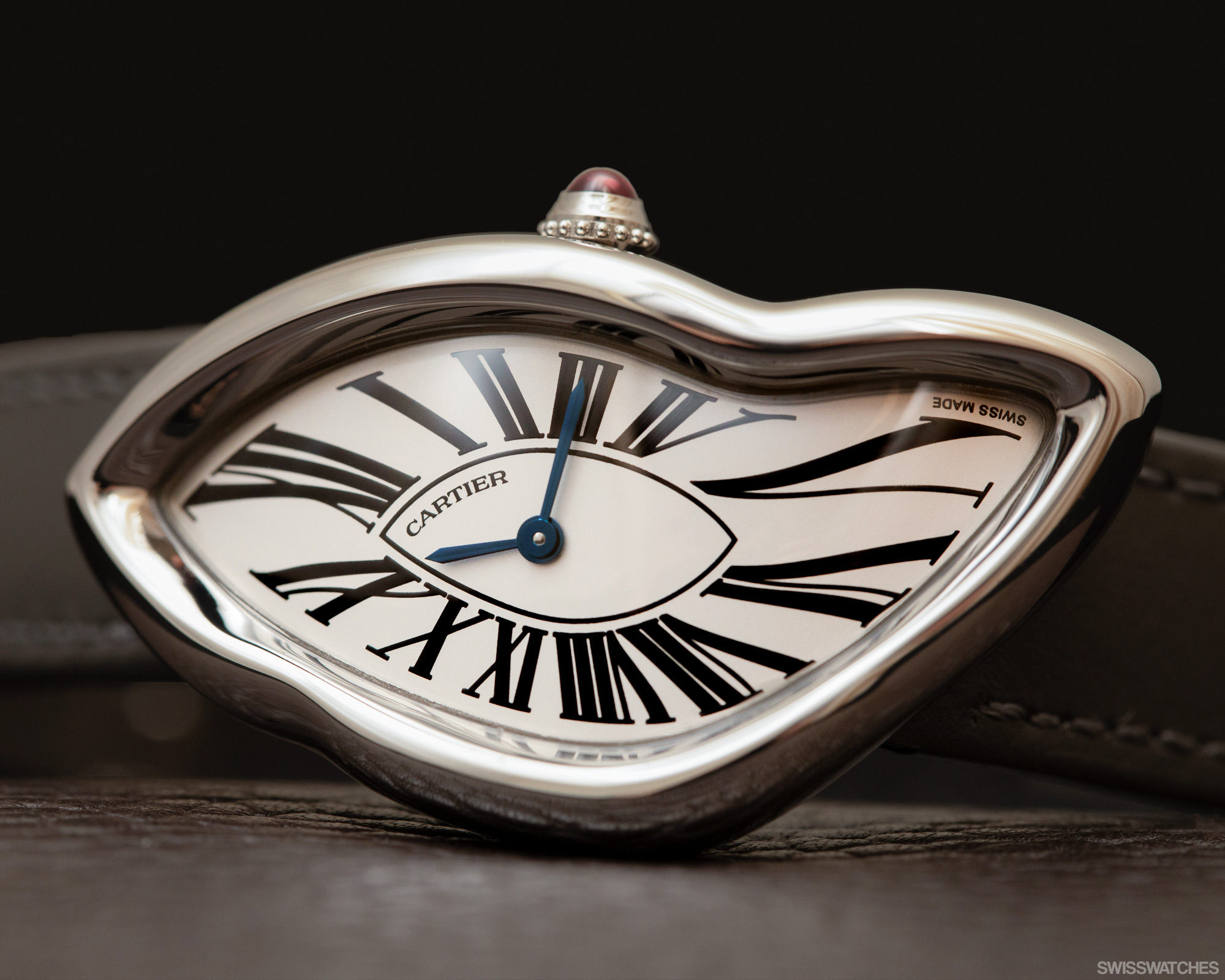
Exclusive to the New Bond Street boutique in London is a new Crash, this time with a platinum case elegantly paired with a white dial and grey strap. A burst of colour is added with the use of blue fired hands and a ruby cabochon crown, which Cartier keeps exclusively for platinum cased wristwatches. It is powered by the 1917 MC calibre, hidden by the solid case-back which is specially engraved with ‘Cartier Bond Street London’. Whilst the watch isn’t a limited edition, it will of course be limited in production and accessibility, as is traditional for the Crash. It is priced at £43,000.
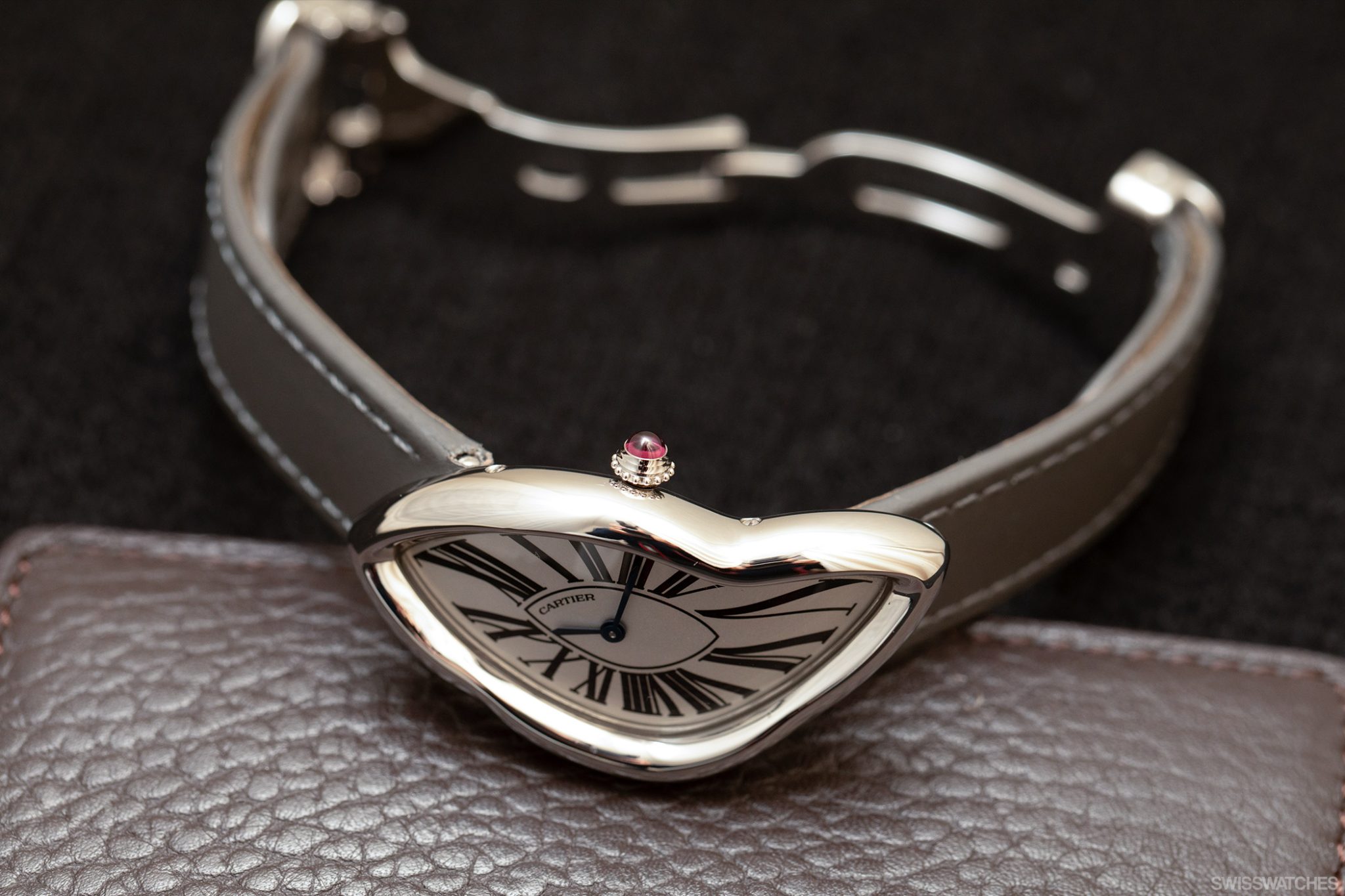
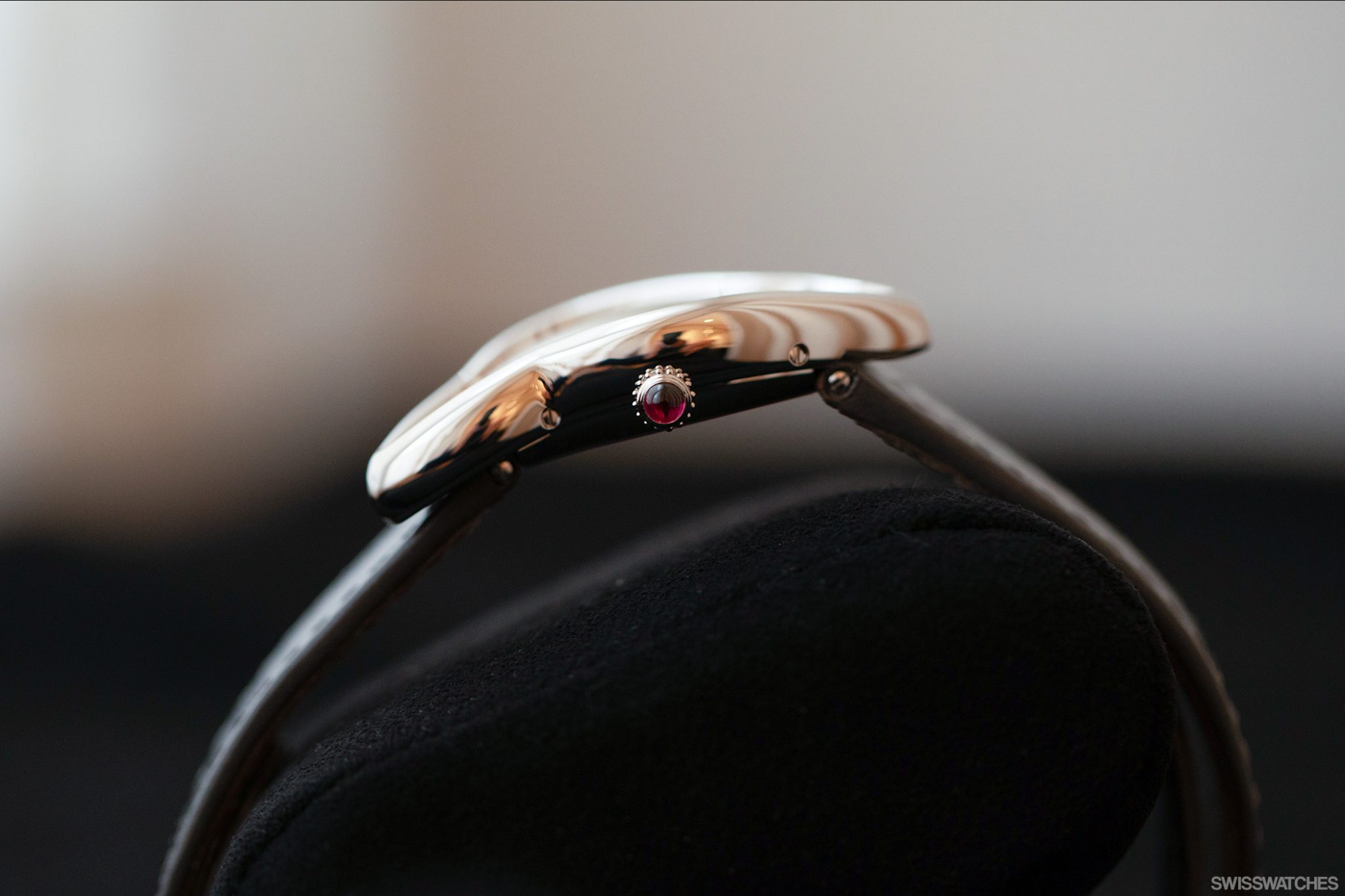
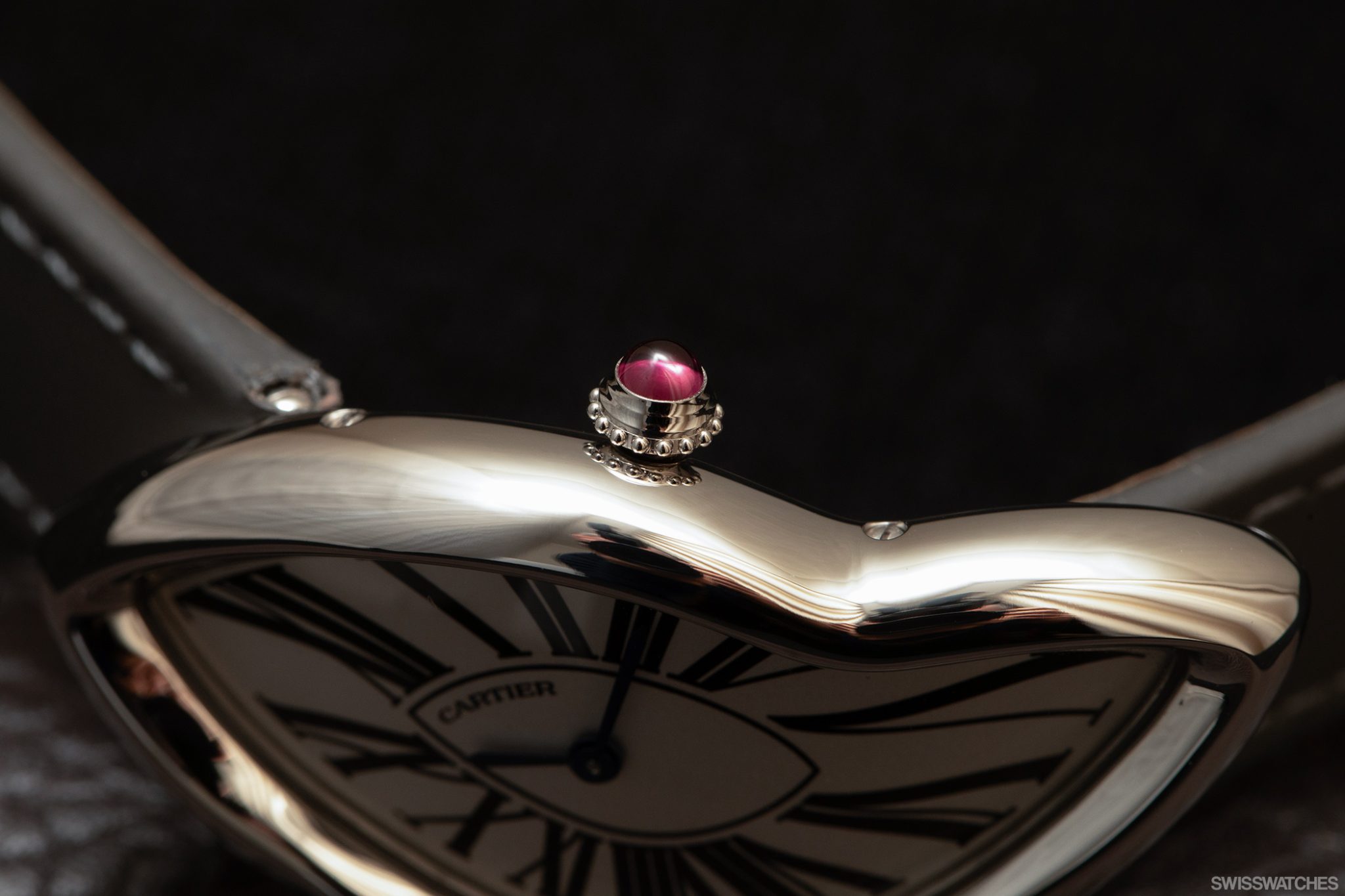
With every new release we can all expect the individual collectable value of the truly important and rare versions to continue rising, which will be reflected in auction results. In the meantime, the Cartier Crash remains one of the most iconic and desirable vintage wristwatch designs which is sought after by many haute enthusiasts who want a slice of 60’s history. But don’t forget, this watch was born in London not Paris.
